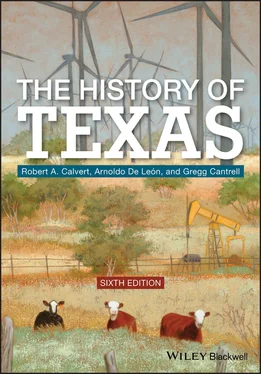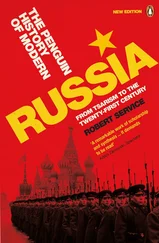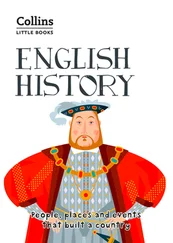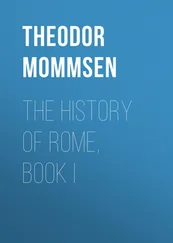1 ...6 7 8 10 11 12 ...37 Cattle raising also flourished in the reconquered areas of southern Castile. In Andalusía, lords raised breeds of cattle that became widely known for the fine quality of their beef and hides. Seasonally, vaqueros , mounted herders, drove the stock cross‐country from the northern summer grazing lands to winter in southern pastures. The vaqueros developed a distinctive dress and equipment, as well as cattle‐ranching traditions and practices such as the rodeo (roundup) and the branding of calves for identification purposes, which were later transplanted to areas that came under Spain’s dominance.
Compared to other various European urban centers that experienced economic downturns, Spain’s cities witnessed a good deal of development, for in the process of reconquest, towns held down and consolidated the gains of battle. In return for their assistance in helping to regain territory from the Muslim “infidels,” towns received charters by which the king guaranteed townspeople the protection of their individual possessions and privileges and permitted them a semblance of self‐governance. During this period, city inhabitants came to belong to ayuntamientos (city councils), which elected town officials. Furthermore, they organized hermandades (brotherhoods) responsible for maintaining the peace. This new form of municipal government replaced the old Roman administrative structure that had broken down following the arrival of the Muslims.
The two Iberian kingdoms of Castile and Aragón united in 1479, when Isabella of Castile and Ferdinand of Aragón, married since 1469, inherited the thrones of their respective dominions. Seeking to consolidate their power over the whole peninsula, the monarchs swiftly pressed for the pacification of the countryside and the subordination of the nobles, the Church, and the military orders, which had gained power during the final stages of the reconquista. The couple’s strategy for accomplishing their plans proved shrewd and inventive–even cunning. In order to suppress criminal activity, for instance, Isabella co‐opted the medieval institution of the hermandad, turning what had begun as municipal brotherhoods to defend mutual interests–ironically against the nobility–into a standing army for the Crown. Political gains made by individuals at the local level during the reconquista thus receded as los reyes católicos (the Catholic kings) began the task of molding Spain into a sovereign nation.
With a semblance of peace and unity restored domestically, the monarchs turned their attention to foreign policy. By the fifteenth century, technological advances enabled Spain to expand its commerce. Much of the new technology came from Portugal, where Prince Henry the Navigator had made brilliant strides in map making and ship building in an effort to see his own country be the first to probe the African coastline, establish sea routes to the Orient, and find a friendly ally for a besieged Christian Europe. As fate determined, it was Portugal’s rival, Spain, that used Henry’s inventions to discover a world completely unknown to Europe.
In 1492, Isabella gave consent to the Italian mariner Christopher Columbus to sail under the flag of Spain in a westerly course to the East Indies. Columbus’s principal motives were economic and political gain, but a desire to spread his religion also prompted him. If successful, he would achieve great things for Spain and Latin Christendom.
From the port of Palos in southern Spain, Columbus, in command of three caravels, steered toward the Canary Islands, already claimed and colonized by the Spaniards. After reprovisioning there, the crews headed into the strong Atlantic seas never before sailed by Europeans. The admiral reckoned he would reach the Orient in 30 days, tap its riches, and in the process establish new allies and trading partners for the Christian world and open vast new lands for religious proselytizing. On October 12, 1492, after more than a month at sea, Columbus sighted land. But he had not reached Asia, as he had assumed he had; rather he came ashore on the modern‐day Bahamas. He named the first island on which he stepped San Salvador (Holy Savior).
Following Columbus’s grand find, Spain proceeded swiftly to transform the “New World,” as the Europeans had dubbed it, into colonies that would provide the Spaniards with the elusive riches they had hoped to reap by finding a shortcut to the Orient. Now a new wave of conquistadores, who in many ways resembled those who had reclaimed the peninsula from the Muslims–having ousted the last of the Moors from Granada in 1492–took the initiative for the acquisition and subordination of new dominions. Characteristics of the traditional conquistador–courage and tenacity, but also callousness, a propensity toward violence, religious zeal, and a desire for gold and glory–typified those who led the conquest of the New World.
Columbus himself played a major part in the takeover of the Caribbean Islands, but the exploration, and exploitation, of the New World proved too vast for one man’s energies. Numerous explorers thus left what had been labeled the “West Indies” for fresh explorations; among them was Vasco Núñez de Balboa. Balboa ultimately crossed the Central American Isthmus, and in 1513, he claimed the Pacific Ocean on behalf of the king of Spain. In the same year, Juan Ponce de León reached Florida, bringing the North American peninsula into the Spanish sphere, though the Spaniards did not succeed in settling the region until the 1560s. The expedition to establish control over modern‐day Mexico was spearheaded by several intriguing war campaigns led by Hernán Cortés, who by 1521 had conquered and plundered Montezuma’s Aztec empire, paving the way for the ruthless domination of the rest of Mexico. In Peru, conquest of the Incas fell to an unlettered conquistador named Francisco Pizarro, who arrived there in 1532, eventually executed the emperor, and despoiled buildings and shrines of their treasures throughout Inca settlements. Blood, rapine, and plunder marked the Spaniards’ path through Peru, as it had their swath through Mexico.
Looking for Fortunes in Texas
Just as the atmosphere of fifteenth‐century Spain helped to mold the ruthless nature of the exploring Spaniards, so, too, did it shape their desire to find riches and amass fortunes. Many people in late medieval Europe still believed in romantic tales of mythic adventure, and books describing fantastic places of great riches and enchantment stimulated Spanish hopes of finding the fabled land of the warlike Amazon women, of the opulent Seven Cities, and the legendary Fountain of Youth. The very real treasures (gold and silver, principally) that the conquistadores did find in Mexico and in Peru only encouraged their people’s convictions that the dreams of lore were indeed realizable in the New World.
It was this search for great fortune that led the Spaniards to the land now known as Texas ( Figure 1.4). The earliest European penetration of what was to become Texas occurred accidentally in 1528, shortly after Pánfilo de Narváez led 400 men into Florida. Landing first near today’s Sarasota Bay, Narváez took three‐fourths of his crew ashore with him to investigate stories of a golden land. Narváez and his men were left stranded on Florida’s west coast, however, after miscommunications prompted his ships to depart for Cuba without them.
Improvising, Narváez and his fellow castaways killed their mounts, fashioning five small boats from the horse hides, in which they hoped to float along the Gulf Coast and eventually reach Mexico. But on a spit of land close to the western portion of modern‐day Galveston Island, the Spaniards were shipwrecked and forced to brave the winter of 1528–29. Enslaved by a band of coastal Indians, only a handful of the Spaniards, among them Alvar Núñez Cabeza de Vaca and Estevanico, a Moorish slave, survived into the spring. After years in bondage, and with their number now down to four, Cabeza de Vaca persuaded the others to escape and follow him. Posing as “medicine men” as they traveled, the Spaniards undertook a remarkable odyssey that led them across the Rio Grande, to a spot northwest of present‐day Roma, Texas, then on through northern Mexico and eventually back into Texas, near today’s Presidio. From there, they trekked along the east bank of the Rio Grande, toward a site some seventy‐five miles below El Paso, then back across the Rio Grande into Mexico and, finally, into the Spanish frontier town of Culiacán, in the western province of Sinaloa.
Читать дальше










